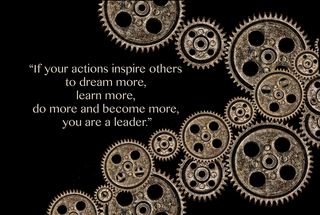There is absolutely no substitute for sitting in a large conference room with people who do the same thing you do, day-after-day. They “get” your challenges because they face similar ones.
 And you missed out on brain storming and sharing ideas out on the patio or in the bar after meeting hours. You didn’t get a chance to sit down with your CC&I coach or your attorney mentor coach face-to-face to discuss what’s holding your team back or to celebrate your victories.
And you missed out on brain storming and sharing ideas out on the patio or in the bar after meeting hours. You didn’t get a chance to sit down with your CC&I coach or your attorney mentor coach face-to-face to discuss what’s holding your team back or to celebrate your victories.
Last, but certainly not least, you and your team missed out on the nine break-out sessions that covered subjects ranging from “Business Succession Planning” to “Busting Financial Advisory Myths.” Even if you DID make it to Phoenix, you’re only one person, right? Maybe you had to make hard choices about which break-out sessions you could attend and heard great things about the ones you missed.
Great news!
So far, three of the nine break-out sessions have been added to the member website, with another three scheduled to be uploaded later this week.
Posted …
Community Presentations & Relations, Presented by Jennifer Rozelle
A how-to guide to securing and presenting Community presentations; how to get them; topic ideas; how to organize and plan them; and how to use them to feed your workshops. Learn the distinctions among Public Workshops, Private Workshops, Professional Presentations and Community Presentations
Post-Death Trust Administration, Presented by Liz Evans
What to do when the 1st spouse dies; what to do after the surviving spouse dies. A practical look at post-death administration issues.
How to Generate Facility Revenue: Getting & Staying in the Door with Nursing Homes, Presented by Roslyn Drotar & Meredith Glendenning
Walk away with a comprehensive nursing home/facility process, which you can go back and implement into your practice, immediately. Learn only what works (we’re saving you from the disastrous efforts) to not only get in the door to nursing homes, not only begin generating revenue, but quadrupling revenue & how to keep it going!
Coming later this week …
Busting Financial Advisor Myths, Presented by Jeff Bellomo & Lou Leyes
Respond with confidence to common myths surrounding asset protection, irrevocable trusts, qualified funds, etc. Get the advisor off of their “default” setting and into strategic, client-centered planning.
You’ve Defined Roles … Now What? Presented by Roslyn Drotar
It is important to provide clear definition and understanding of roles. You’ve defined roles, now what? Learn how to take the role definition to the next level. Learn the skills needed to go beyond just making certain nothing falls through the cracks. Learn different approaches, regardless of the circumstances to create accountability AND work together at your team best!
Business Succession Planning Presented by Dave Zumpano
An advanced level legal-technical session – what to do when the business planning client already has a corporation structure (LLCs, S-Corps, C-Corps) – creating a business succession plan.
10 Key Features of the Trust Drafting Software That You Need to Know, Presented by Aaron Miller
Learn the 10 key features of the LWP-CCS Trust Drafting software and how to make them a multiplier to distinguish you in your Estate Planning community.
Coming in December
What’s Happening in the Conference Room? – The Signing and Funding Meetings, Presented by Susan Hunter
The third of the “Conference Room” series – designed to give the team a look at what, exactly, occurs for the client during the key meetings. Team members will be better equipped to assist clients while they navigate the process, and can set expectations or answer questions directly. Attorneys who attend will learn how to delegate these meetings to their team.
Communication Skills, Presented by Susan Hunter
Take the next step in developing your communication skills; sharpen your saw with practical applications of MIFy™ and Power-in-Partnership™ including client meetings and team conversations.
While you’re at it, take a look around the member website. We’ve been making changes to follow LWP processes more closely in the web layout. This should make it much easier for members to find tools and materials to support their practices.
If you have comments or suggestions about the website layout, I’d love to hear them. Write me at ncatale@lawyerswithpurpose.com.
Nedra Catale – Coaching, Consulting & Implementation, Lawyers With Purpose









